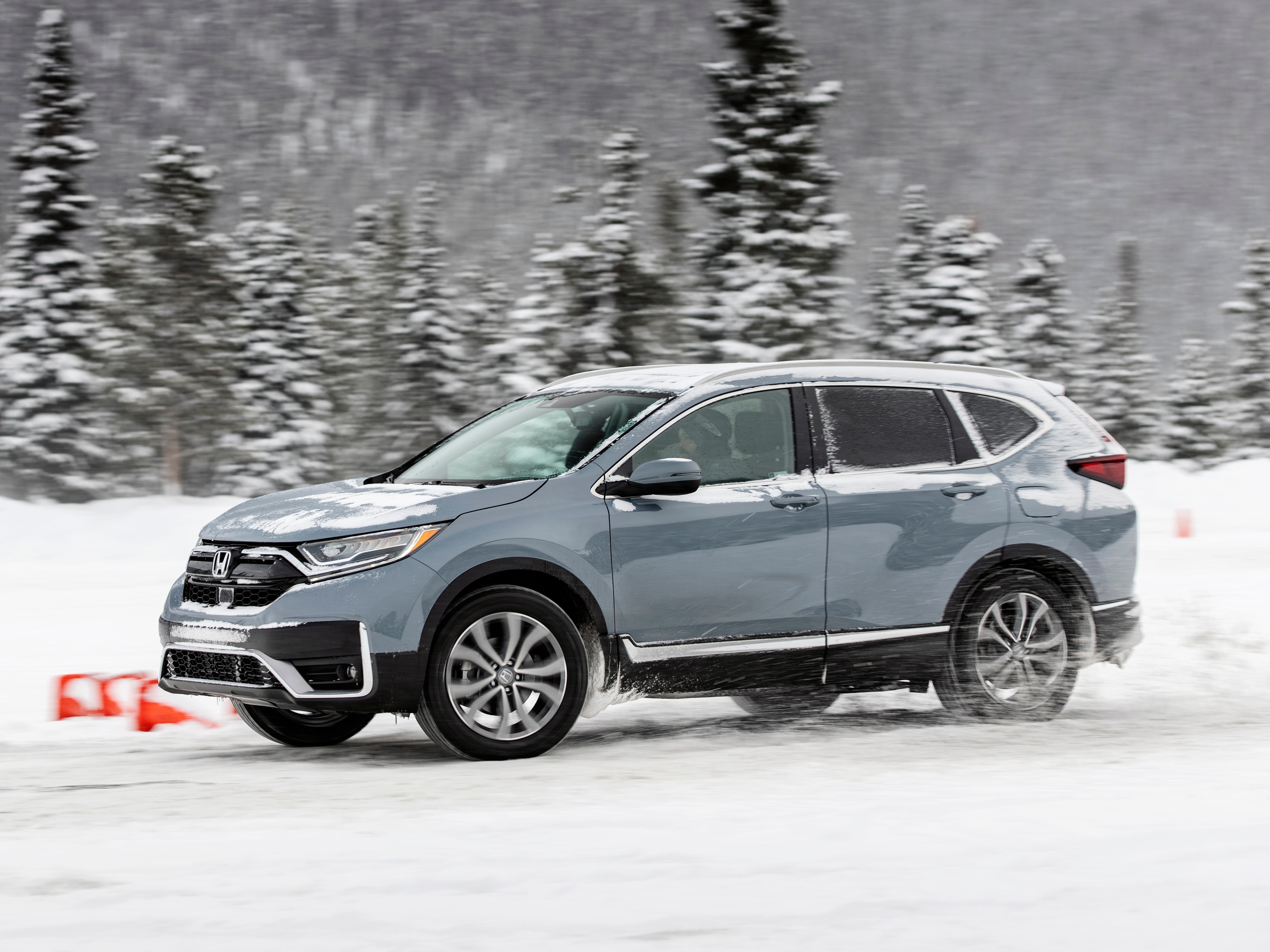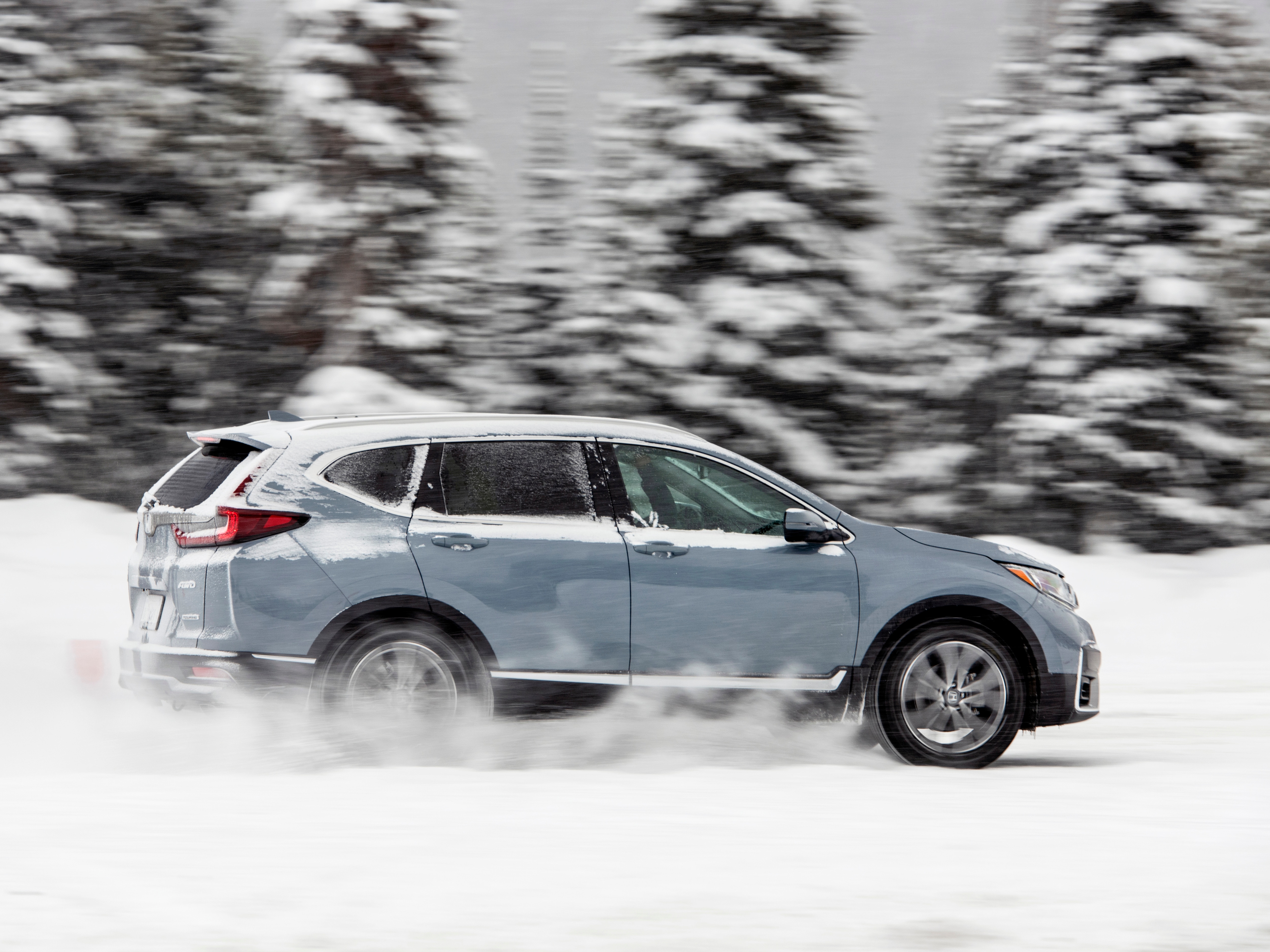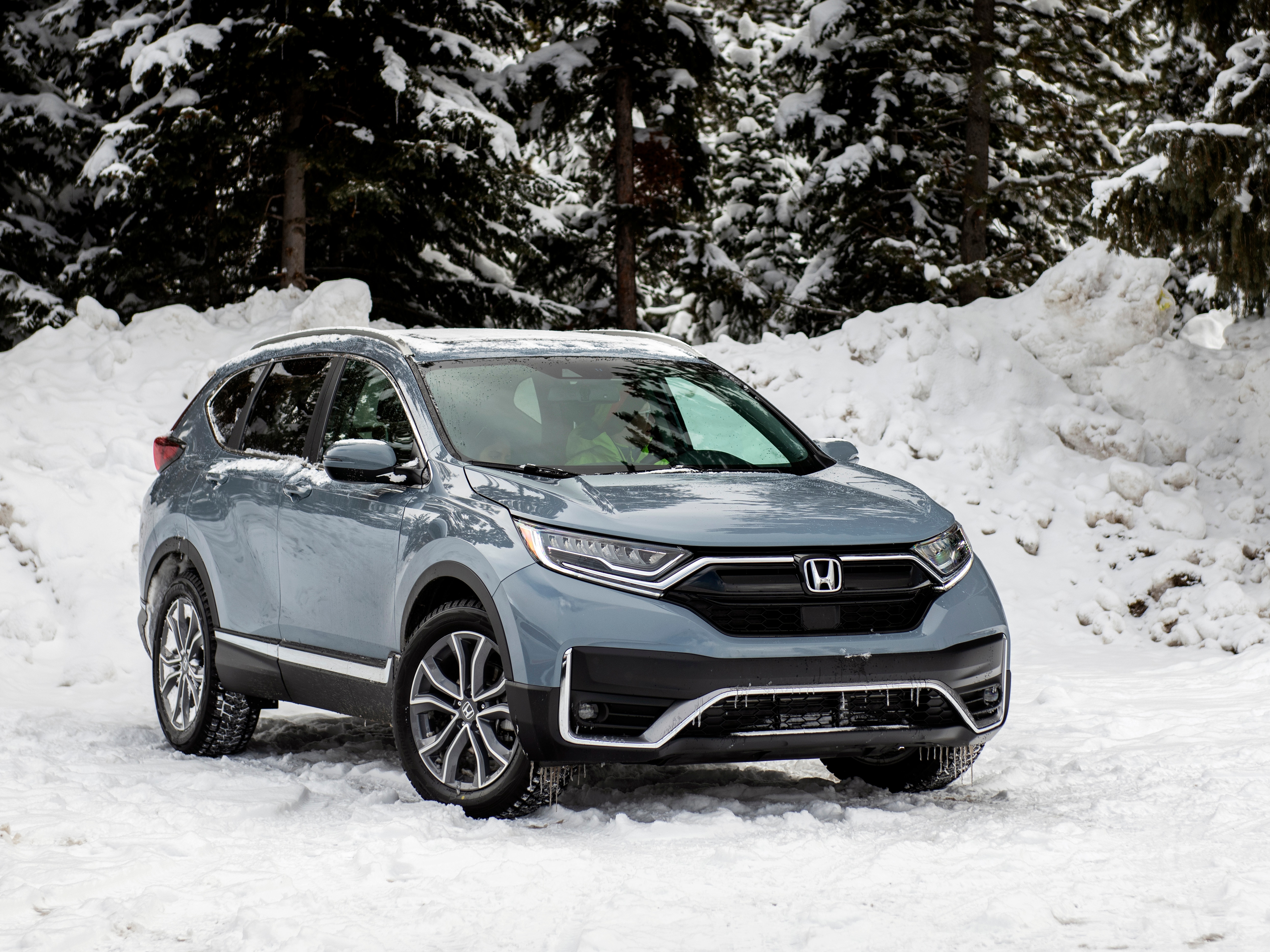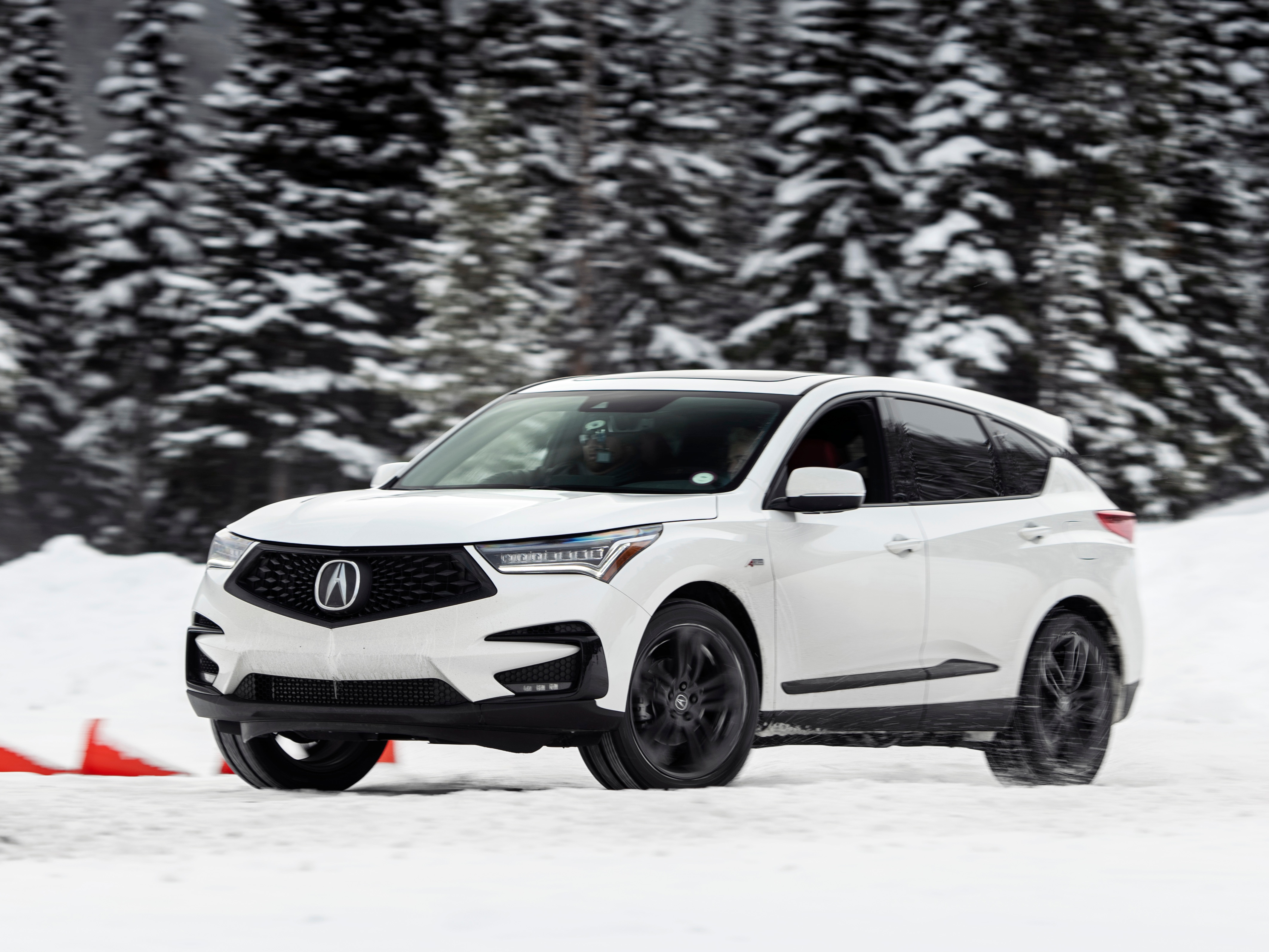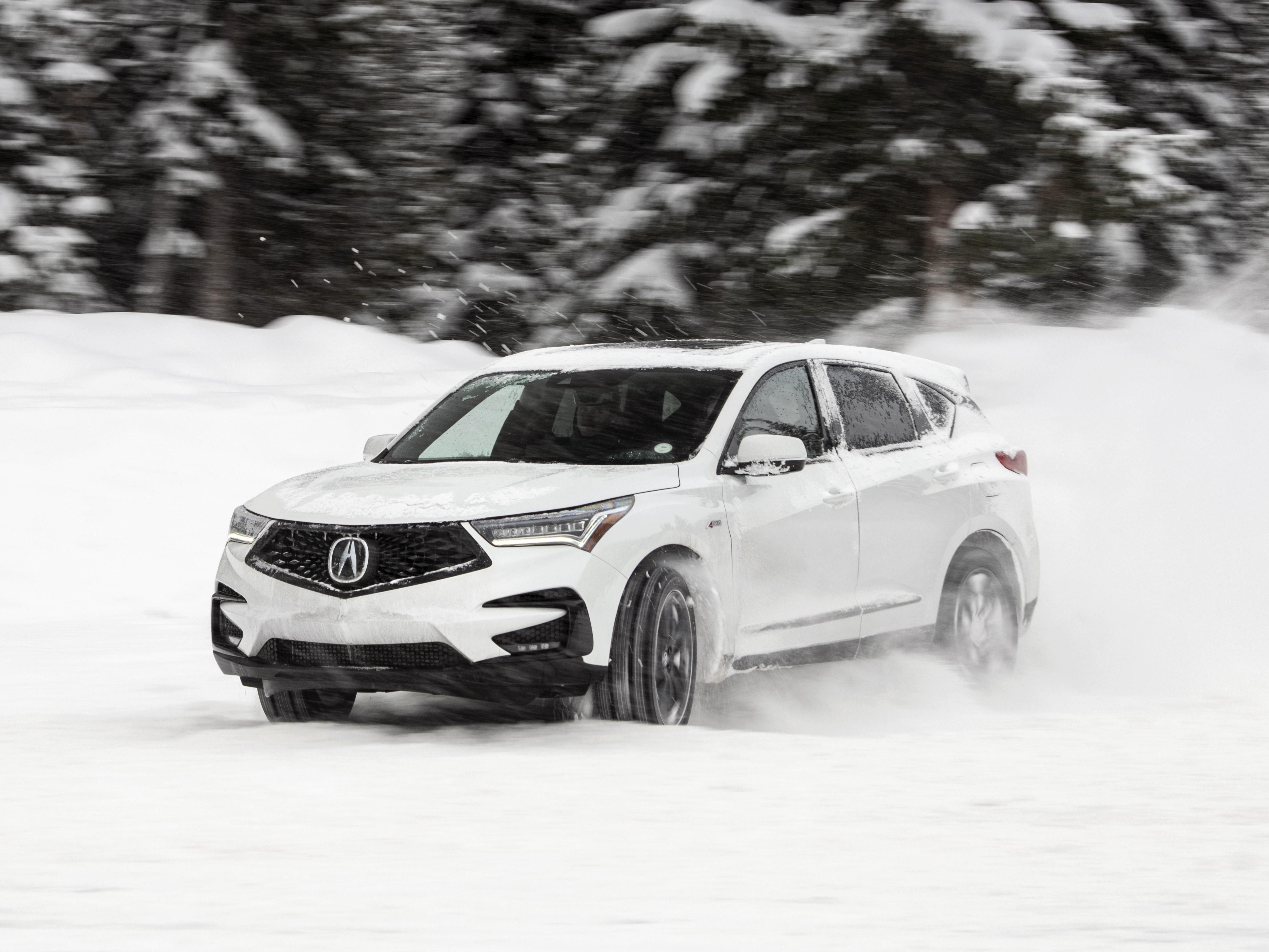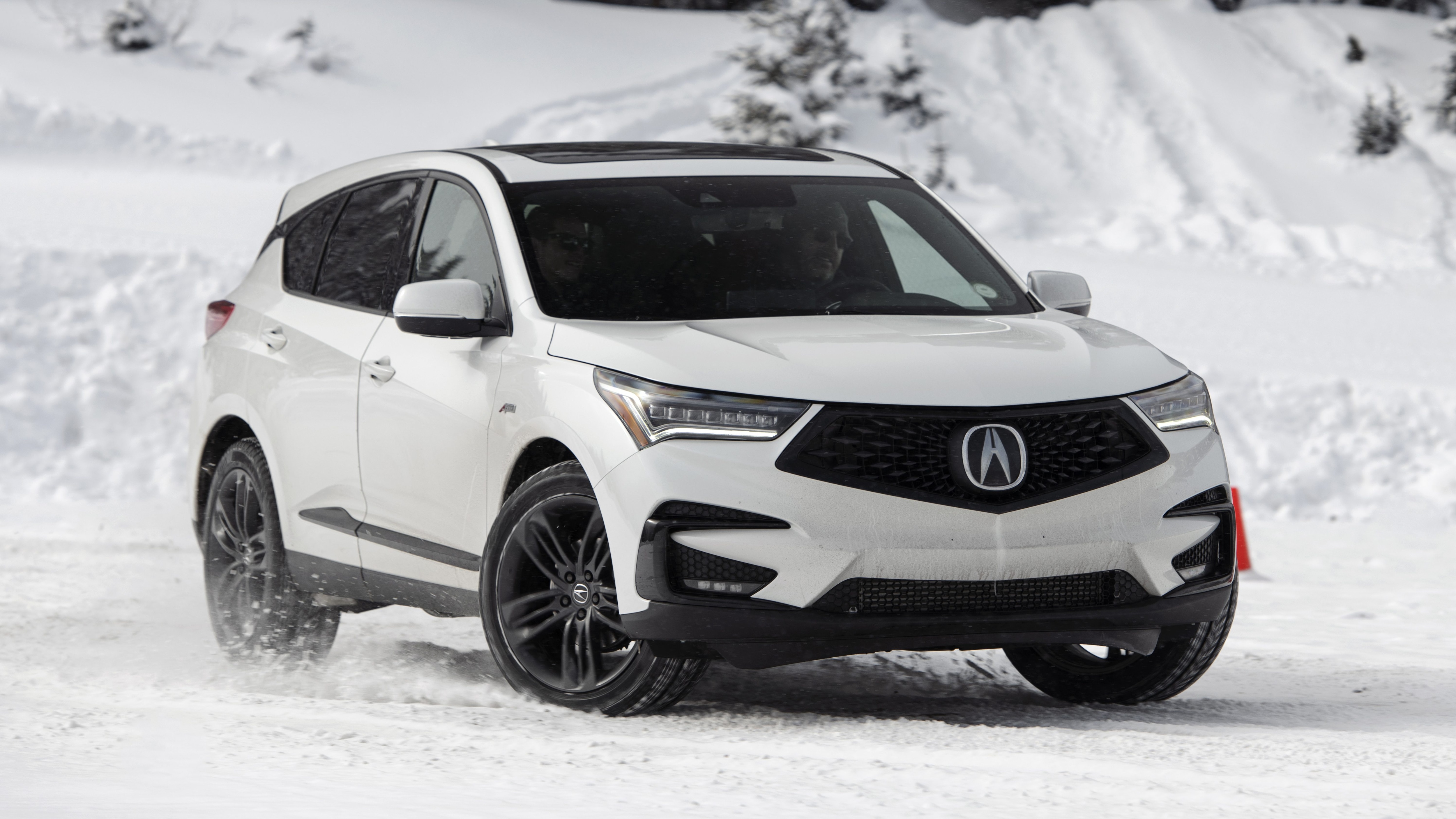Honda Motor Company offers several different all-wheel-drive systems across its product lines. The contrast is as extreme as the rugged system on the Honda Ridgeline to the tenacious variant on the high-performance Acura NSX. To test two of the most advanced systems from Honda and Acura, we traveled to Winter Park, Colorado. There, several feet of fresh snow and ice challenged the 2020 Honda CR-V and the 2020 Acura RDX. While both vehicles have all-season tires as standard equipment, the extreme conditions warranted dedicated winter tires for our evaluations.
Honda Real Time AWD
The 2020 Honda CR-V is equipped with Honda’s Real Time AWD (all-wheel drive). The system is engineered to improve traction under all driving conditions without compromising fuel economy. Technically speaking, Real Time AWD is a front-drive system that utilizes a multi-plate clutch to connect the rear wheels to the engine. The clutch is operated by an electric motor and a hydraulic pump. Both are controlled by the Intelligent Control System (monitoring acceleration, throttle position, yaw and steering wheel angle).
Only the front wheels are powered under normal driving conditions, as this is the most fuel-efficient driving mode. However, the Intelligent Control System continuously monitors its sensors to proactively detect potential slip. It then transfers power to the rear wheels. The distribution is variable, and under some conditions, the system can route nearly all available power to the rear.
How does Honda Real Time AWD work in the snow?
The CR-V’s Intelligent Traction Management system has three modes (Snow, Mud, and Sand). In snow mode, the transmission starts in a higher gear and throttle response is dampened to reduce tire slippage. The system is very effective when combined with snow tires. When driven properly for the road conditions, the CR-V moves smartly off the line with minimal drama. Steering is secure, braking is effective, and directional control is excellent. Despite the heavy snowfall, we never encountered any moment when we felt the Honda CR-V was struggling.
Aggressive throttle and steering inputs are met with resistance, as the vehicle’s Traction Control System (TCS) and Vehicle Stability Assist (VSA) leap into action and systematically reduce throttle and selectively apply the brakes to limit forward momentum. Slow and steady inputs, in order to restore grip, are rewarded with acceleration and speed.
With VSA deactivated via the dashboard switch, the Honda CR-V may be driven more aggressively — to an extent. Most of the power is sent to the front wheels (which spin wildly as a result), but power is also transferred rearward. As a result, the CR-V is easy to control and predictable in its trajectory. It may be drifted with a wide-open throttle, but it is an exercise in sliding understeer. Turn the steering wheel too far, in either direction, and power is cut by the traction and stability systems.
Acura Super Handling All-Wheel Drive
The 2020 Acura RDX is fitted with Acura’s fourth-generation Super Handling All-Wheel Drive (SH-AWD). Unlike most all-wheel drive systems, which are engineered to improve traction on slippery surfaces, SH-AWD is designed for performance driving — its mission is to deliver premium sport-tuned handling on dry roads. Towards that objective, Acura’s engineers have programmed the electric system to optimally distribute the power to the ideal wheel (or wheels) based on vehicle speed, steering angle, yaw rate, and lateral G-forces.
During normal steady-state driving, SH-AWD delivers most of the power to the front wheels as this is the most fuel-efficient configuration. However, if the vehicle’s sensors determine acceleration, lateral forces, or wheel slip, they instantaneously reconfigure the power distribution. Acceleration will send nearly 50 percent of the engine’s power to the rear to maximize grip. Cornering forces will send power rearward (to improve driving dynamics) and to the outside wheels (where the vehicle’s weight has shifted). This improves the cornering balance and allows the tires with the best grip to apply the most power to the pavement.
Acura’s SH-AWD is continuously monitoring vehicle dynamics and varying the power distribution in response. As such, the system is able to send up to 70 percent of the torque to the rear axle and 100 percent of the torque to the right or left side based on need.
How does Acura Super Handling All-Wheel Drive work in the snow?
The Integrated Dynamics System (IDS) on the Acura RDX offers four driving modes (Comfort, Sport, Sport+, and Snow). Snow mode starts the vehicle in a higher gear and reduces throttle sensitivity. Both reduce wheel slippage during acceleration. Configured in this manner on winter tires the RDX is nearly unstoppable. Driven properly for the conditions, the crossover moves off the line with intrepid authority, tracks well, and delivers confident handling.
Vehicle dynamics are hampered if the driver is aggressive with the RDX’s controls on snow or ice. Rapid throttle inputs are met with resistance as the VSA cuts power and actuates brakes to prevent wheel slip and unintended directional changes. The same intervention occurs if the steering wheel is sharply jerked left or right while moving. Of course, these are expected from the electronic systems on low friction surfaces. The RDX, equipped with Super Handling All-Wheel Drive (SH-AWD), is determined to always make the driver feel safe and secure.
To test SH-AWD without restriction, we shut of VSA completely. Mashing the throttle in deep snow delivers an impressive four-wheel burnout with a rooster tail of snow rocketing out of the RDX’s rear end. Vehicle velocity eventually matches wheel speed and slippage disappears unless the throttle or steering is aggressively prodded — in a mischievous manner. When driven with skill, the RDX will joyously drift, with its rear wheels spinning wildly, until the operator deliberately reigns in the fun.
Is Acura Super Handling All-Wheel Drive better than Honda Real Time AWD?
Acura’s Super Handling All-Wheel Drive and Honda’s Real Time AWD are two unique all-wheel-drive systems engineered with different objectives. Acura’s enthusiast-tuned system proactively sends power to all four corners to enhance driving dynamics on dry roads. It is superior for these conditions and it also aids traction on wet and snowy roads. On the other hand, Honda’s system augments its front-wheel-drive architecture to promote predictable driving dynamics and fuel efficiency. At the same time, it seamlessly delivers surefootedness in snow and ice and is our first choice for winter driving.

